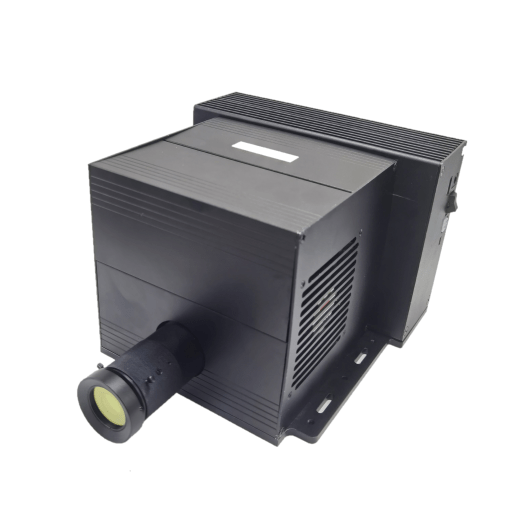Introduction
3D printing has evolved far beyond hobbyist prototypes, and one of the most exciting frontiers lies in high-precision, specialized manufacturing using ultraviolet light. At the heart of this innovation is Digital Light Processing (DLP) technology combined with high-brightness UV light sources—a marriage that’s unlocking unprecedented capabilities in fields like microfluidics, biomedical devices, and aerospace.
What Makes UV DLP 3D Printing Special?
Traditional 3D printing methods like FDM or SLA rely on layer-by-layer deposition or laser-curing of resins. UV DLP systems, however, use digital micromirror devices (DMDs) to project entire 2D cross-sectional patterns of UV light onto photopolymer resin, curing full layers in seconds. When paired with high-intensity 385–405 nm UV LEDs or laser modules, this process achieves:
Faster print speeds (layers in <1 second vs. minutes for conventional SLA)
Micron-scale resolution (down to 10–25 μm pixel sizes)
Superior material properties (deeper curing for stronger, more durable parts)
The Science Behind the Brightness
High-brightness UV light is critical because:
Penetration Depth: Intense UV photons penetrate deeper into resin, enabling thicker layers without under-curing.
Reactivity: Short-wavelength UV triggers rapid photopolymerization, reducing oxygen inhibition for smoother surfaces.
Energy Efficiency: Modern UV LEDs achieve 5–10 W/cm² irradiance with minimal heat, avoiding resin overheating.
A recent study (Nature, 2023) demonstrated that doubling UV intensity can cut printing time by 40% while maintaining part strength—a game-changer for industrial adoption.
Applications Redefined
Biomedical Implants: Dental aligners and bone scaffolds printed with medical-grade resins require UV DLP’s speed and biocompatibility.
Microfluidics: Lab-on-a-chip devices with sub-100 μm channels are now printable in minutes, not days.
Optics & Electronics: Lenses, waveguides, and embedded circuits benefit from DLP’s accuracy.
Aerospace: Fuel nozzles with complex internal geometries achieve flight certification using high-temperature UV-cured ceramics.
Challenges & Innovations
While powerful, UV DLP isn’t without hurdles:
Material Limitations: Resins must balance viscosity, cure speed, and post-processing.
Oxygen Sensitivity: Some systems use nitrogen purging to suppress surface tackiness.
Cost: High-brightness UV modules remain expensive, though prices are falling 20% annually.
Pioneering companies like Carbon3D and Boston Micro Fabrication are addressing these by developing adaptive exposure algorithms and hybrid resins that cure faster under intense UV.
The Future is Bright (and Ultraviolet)
As UV DLP systems shrink in size and cost, expect:
Desktop industrial printers for dental labs and universities.
Multi-wavelength systems curing 2+ materials simultaneously.
AI-driven exposure optimization to prevent layer defects.
Conclusion
High-brightness UV DLP projection isn’t just improving 3D printing—it’s redefining what’s possible in advanced manufacturing. By harnessing light with surgical precision, this technology is illuminating a path toward mass customization, faster R&D cycles, and breakthroughs we’ve yet to imagine.


Share:
The Cutting-Edge Evolution of Humanoid Robot Joint Modules: Why You Should Upgrade Now
The Revolutionary Impact of SICUBE’s TIR Prism on Modern Optics
1 코멘트
gevsmp